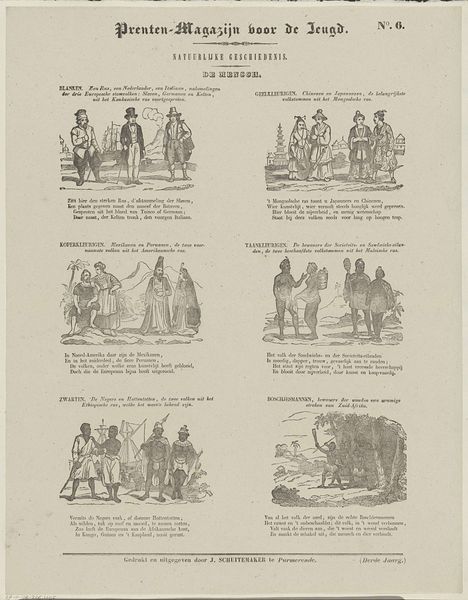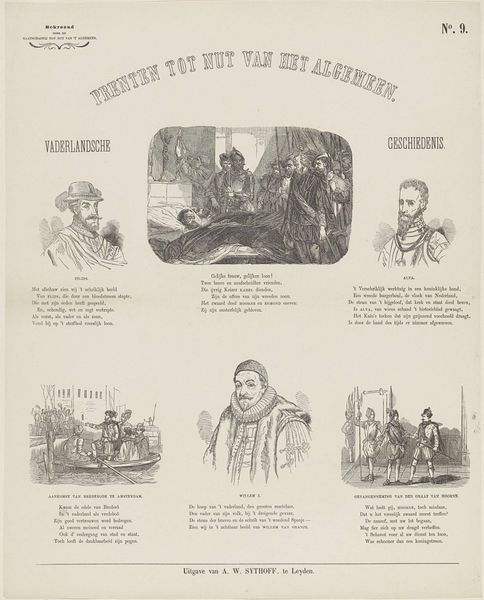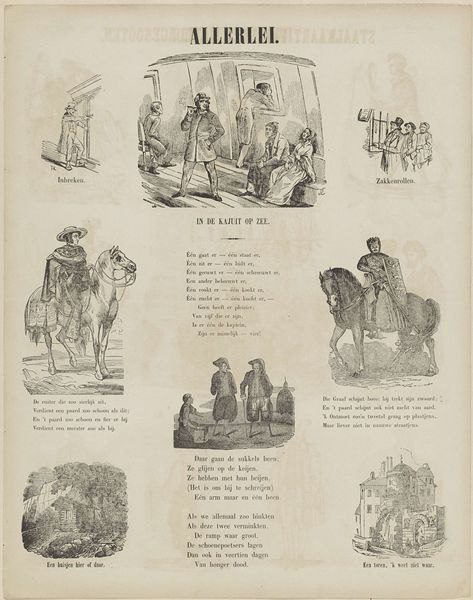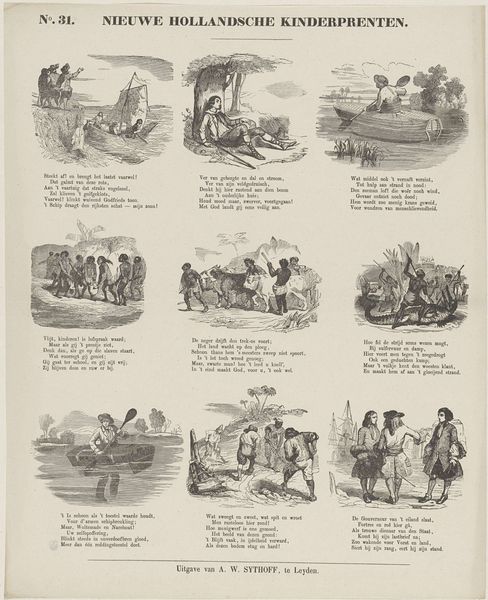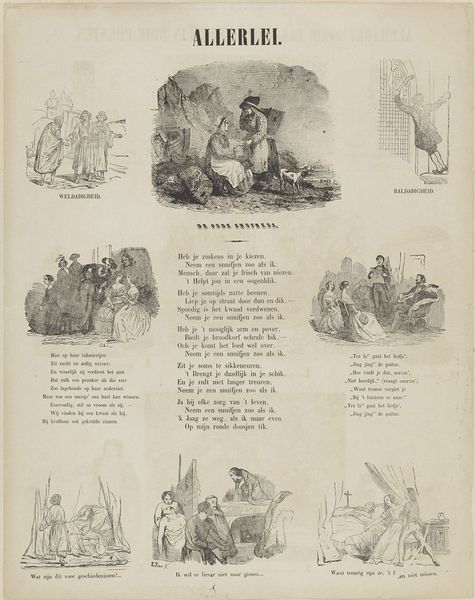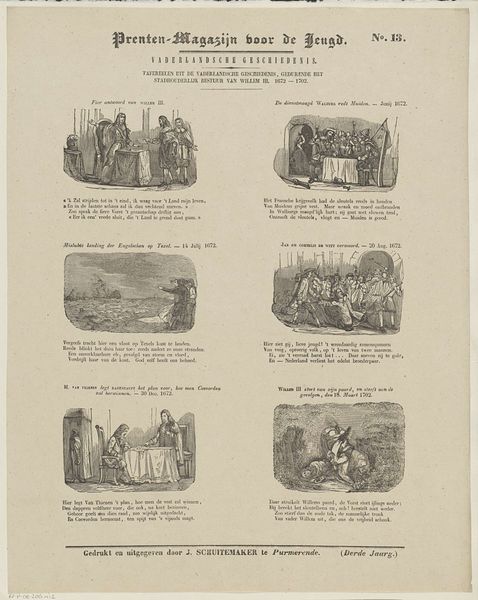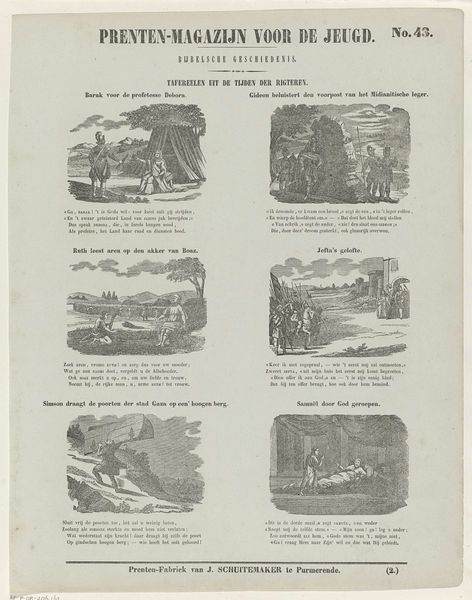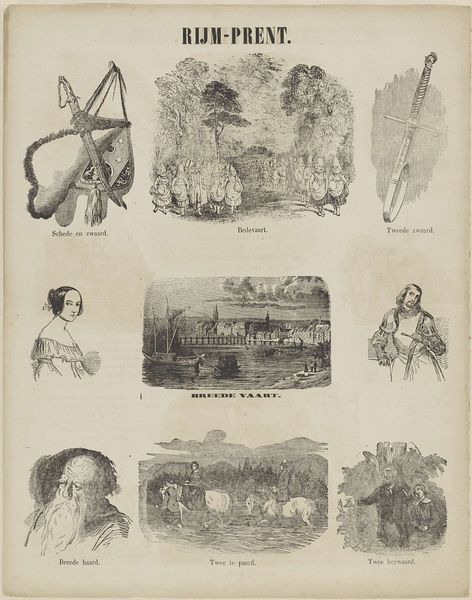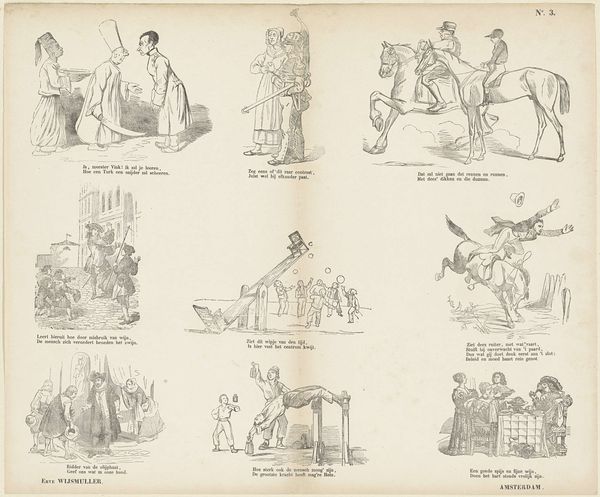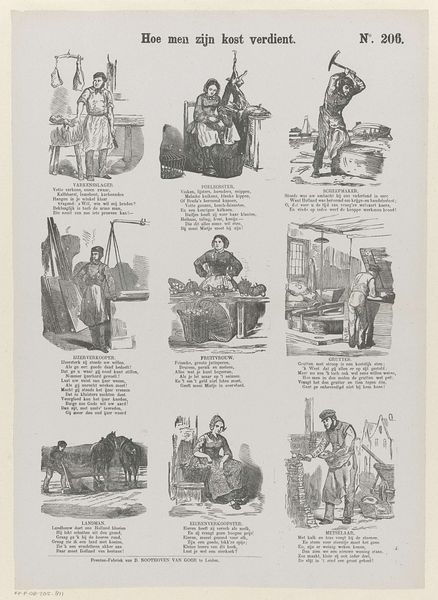
graphic-art, print, engraving
#
graphic-art
# print
#
old engraving style
#
landscape
#
orientalism
#
history-painting
#
engraving
Dimensions: height 416 mm, width 342 mm
Copyright: Rijks Museum: Open Domain
Editor: So, this print, “Nederlandsch Oost-Indie,” dating between 1861 and 1929, uses engraving techniques to depict scenes of the Dutch East Indies. It’s striking how this single sheet tries to represent so much. What catches your eye when you look at it? Curator: I notice the publisher, A.W. Sijthoff, who printed these engravings. Who was his target audience? Were these meant to educate the Dutch public? The materiality of printmaking allows for the wide dissemination of information, and in this case, potentially shapes public perception of the Indies. Do you see a similar political motive, a material interest, represented? Editor: I do, particularly in the captions beneath each image, and in the title banner, which is intended to benefit all citizens, right? Perhaps the print operates as a tool, subtly justifying Dutch colonial ambitions. It makes me think about the labor involved in both creating and distributing such prints and what the public would have then bought and how those messages about "the Indies" might spread. Curator: Precisely. Consider the material processes at play here: the engraver's skill, the printing press churning out copies, and the distribution networks that delivered this image into Dutch homes. Each step involved human labor and served a specific purpose. How did these elements, and the knowledge embedded in them, support a larger economic and political agenda? Editor: It almost normalizes it. That's such a contrast with how we look at images today. So it’s not just about *what* is depicted but *how* it was made, for whom, and how widely it spread. That's a new way of seeing things. Curator: Indeed. The circulation and consumption of these images is itself part of the artwork's story.
Comments
No comments
Be the first to comment and join the conversation on the ultimate creative platform.
